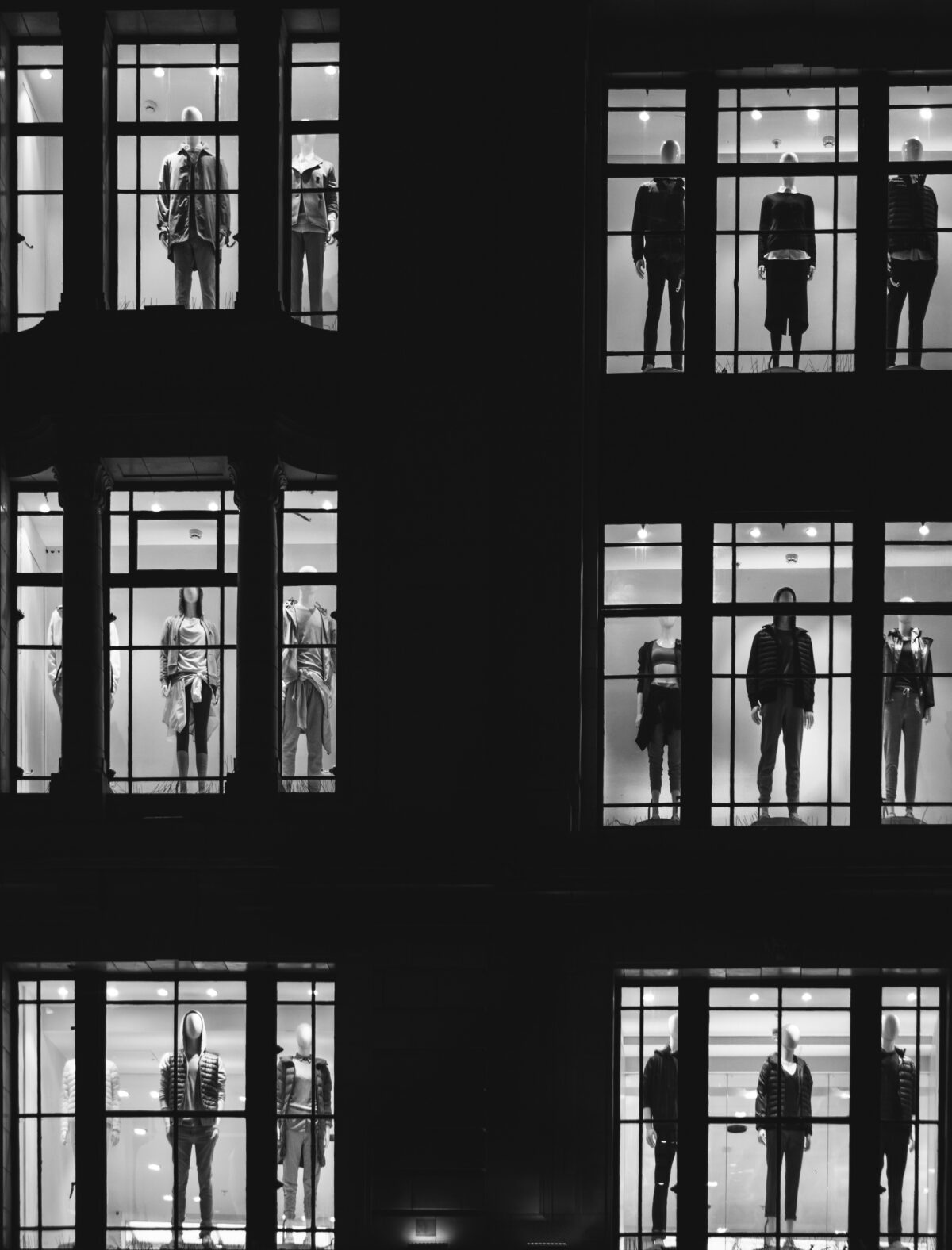This article originally appeared on pages 18-19 of the Spring 2023 issue of Coulture Magazine.
Anti-fashion. It’s a term that constantly gets thrown around in discussions pertaining to modern cultural phenomenons. Similar to many concepts discussed in the fashion world, it can be difficult to create a single concrete definition of the word. And this is generally true in fashion. The more you attempt to define concepts, the larger the required syntax becomes. Oftentimes it’s nearly impossible to explain certain elements without experiencing examples firsthand. Frankly, fashion and its terms can create more questions than answers. For a long time, anti-fashion had a simple meaning as long as you understood current trends. Anti-fashion could be defined as whatever the current trend was not. This didn’t necessarily mean anti-fashion was whatever people were wearing that wasn’t on the runways, it implied a conscious effort to go against the status quo. Nowadays, it’s more difficult to end the conversation there, with many powers at play determined to make anti-fashion fashionable.
Theoretically, anti-fashion has existed as long as fashion has existed. The two are inextricably linked. But this doesn’t necessarily mean clothing or physical garments, but instead the idea of fashion as consciously appealing to society’s dictations. By definition, anything that is connected to orientation of oneself is, by definition, fashion — not just actual clothing. Separating these two makes it easier to understand anti-fashion in its contemporary state. In America, the easiest area to pinpoint the start of widespread anti-fashion would be in the greaser subculture of the fifties. Up to this point there were only two different age groups clothing was designed for, children and adults. The greaser subculture rejected this expectation, and many teenagers began to emulate the look of motorcyclists and people perceived to be in street gangs, who had more relaxed looks and wardrobes compared to the typical dress of adults. In each following decade, appearances considered anti-fashion continued to be a method of expression used to reject the popular idea of fashion.
So what about the current state of the industry makes it more difficult to call something anti fashion? One of the major impacting factors is the change we’ve seen in power. Historically, fashion would be determined by key cultural figures or essentrics often selected with bias for their wealth and influence in the fashion industry in some way. Despite that, many of the most fondly remembered designers in recent history are those who went against the current trends, often because their work helped them stick out from what everyone else was doing. Some of these designers were driven by political movements such as Vivienne Westwood and Rick Owens. Others, including but not limited to Yohji Yamamoto and Raf Simons, focused solely on their craft so much to the point their work is considered more timeless and impossible to place in any specific period. In a trend driven industry, these designers were seen as anti-fashion because they were considered oppositional to what usually made fashion profitable, even if they did not do so intentionally.. As these designers gained acceptance and acclaim in the global fashion zeitgeist, it became clear that utilizing fashion to go against the status quo was a concept that wasn’t going away. Wearing what you wanted, regardless of whether it was trendy, subversive or somewhere in-between, became increasingly appealing because of these designers. This growing celebration of individualism has allowed more to be considered “fashionable” which in turn takes away some of the power from the fashion establishment to determine trends, but also dilutes the oppositional power at the core of anti-fashion.
So, what happens when going against the status quo becomes the status quo? In 2023, it’s never been easier to buy the things we see online. Most fashion influencers have links to purchase every part of their outfit whenever they make a post, whether their outfit is from Zara or an unknown indie brand. Designers once revered for being alternative are cataloged by fashion search engine TAGWALK in the same way as ubiquitous brands such as Dior and Valentino. These anti fashion brands have become accepted as fashion, even if they attempt to go against the current trends. The fashion world has learned to adapt to every move a designer can make, and it’s never been quicker and easier for a brand doing something different to become accepted (if the demand is there). What is not the current trend will soon morph into the current trend. This leaves anti fashion at an awkward crossroad. What’s the alternative?
The last couple decades of anti-fashion have seen a large interaction with postmodernity. In art and fashion, postmodernity can be characterized as larger than life absurdism designed to deconstruct preconceived notions of necessary power structures. If modernity was a straight line, postmodernity would be a big mess of scribbles with no discernable stop and starting point. Much like anti fashion, postmodernity has been questioned on its relevance and current place in theoretical discussions. If we were to claim the grandiosity of postmodernism can no longer be shielded from the vortex of trend forecasting for the next coming seasons: where can the anti exist?
Anti fashion will continue to exist as complete disregard for brands. Anti fashion is thrifting.-Not buying a gently used Forever 21 top from a couple seasons ago…but finding an unassuming pair of cargo pants with no discernible tags. It exists in spontaneous leg warmers made out of the sleeves of an old shirt. And though anti-fashion now has to contend with algorithms and round the clock surveillance for the next “thing” it will never die. There will always be something completely unpredictable waiting around the corner, whether it’s a Joan Jett shirt bleached beyond recognition or a slip dress cut to smithereens.
- Is Anti-Fashion Dead? - April 28, 2023

